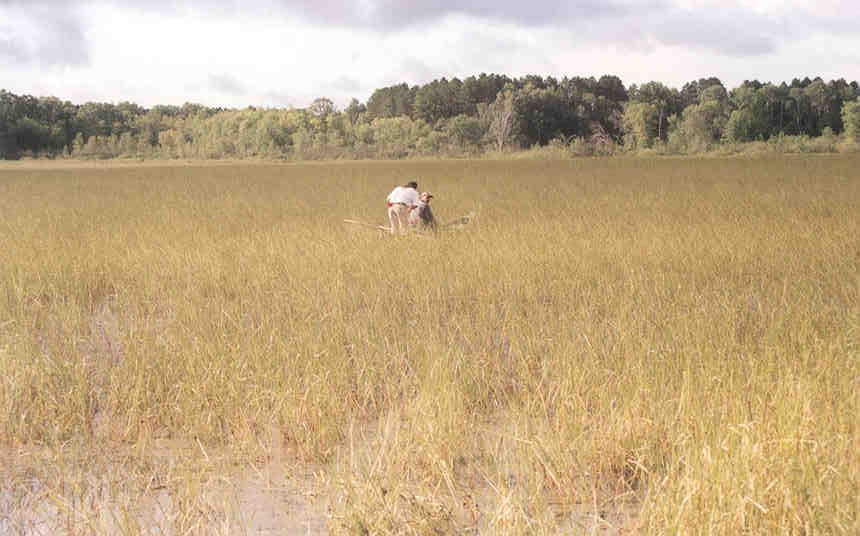Maui and Minnesota
.jpg)
May 5th, 2020
Adam Reinhardt, MCEA St. Paul office:
In a big win for clean water, on Thursday, April 23rd, the U.S. Supreme Court sided with environmental groups, including MCEA, on a water pollution case involving a wastewater treatment plant in Maui, Hawaii. This decision will have rippling impacts across the United States, including Minnesota.
In a 6-3 decision, the U.S. Supreme Court said that the Clean Water Act prohibits pollution discharged to groundwater if the pollution ultimately contaminates surface waters (lakes, rivers and wetlands). Such discharges are only allowed with a Clean Water Act permit, which is designed to prevent harm to the environment and public health.
What was happening in Maui, Hawaii?
Each day, the County of Maui’s wastewater treatment facility pumps around 4 million gallons of partially treated sewage into the ground through wells. This “effluent” (the term used for wastewater discharge) travels through the ground roughly a half mile before reaching the Pacific Ocean. The impact of the County of Maui’s discharge is significant; devastating fish life and reefs in the surrounding area. Despite this, the County did not have a Clean Water Act permit for its sewage discharge. The County argued that no permit was necessary because the Clean Water Act doesn’t cover discharges to groundwater, but only discharges directly to surface waters. Environmental groups disagreed, and sued.
What did the US Supreme Court decide?
In a decision written by Justice Breyer, the U.S. Supreme Court said that the County of Maui’s wastewater discharge into the ground required a Clean Water Act permit because it is, “the functional equivalent” of a direct discharge into the Pacific Ocean. While the Supreme Court agreed that there are limits to the extent that the Clean Water Act covers groundwater discharges, they said it was “significantly broader” than a total exemption of discharges into groundwater.
Groundwater pollution and Minnesota Wild Rice
Halfway around the world in Minnesota, for over 20 years, U.S. Steel has operated a tailings dam at its Minntac mining facility with an expired and inadequate Clean Water Act permit. MCEA made repeated requests to the MPCA to have this permit updated. In 2016, MCEA sued the MPCA, forcing the agency to issue Minntac a new permit. However, this new permit failed to protect the environment and surrounding communities, including the Fond du Lac Band of Lake Superior Chippewa, from the impacts of pollution from MinnTac’s tailings dam. Daily, thousands of gallons of polluted water leach from MinnTac’s tailings basin into groundwater and ultimately resurface into surrounding lakes, rivers and wetlands. This polluted water, high in sulfate, is a known cause of the depletion of wild rice; a critical natural resource for The Band both culturally and economically. An appeal of that permit is now pending before the Minnesota Supreme Court.

What the U.S. Supreme Court decision means for Minnesota
Minntac is Minnesota’s Maui -- a discharge of pollution to groundwater that is having devastating impacts on surrounding surface waters. Because of that, MCEA represented the Fond du Lac Band of Lake Superior Chippewa in an amicus brief to the U.S. Supreme Court in the County of Maui v. Hawaii Wildlife Fund case. The brief described the impact of groundwater pollution from Minntac’s tailings basin and how it is critical for Federal law (the Clean Water Act) to apply to these types of discharges. Minntac’s groundwater pollution is impacting the rights of the Fond Du Lac community. The surface water near the Minntac tailings basin that provides a habitat for wild rice needs protection. Permitting under the Clean Water Act will help clean up the pollution impacting The Band’s way of life and prevent this type of pollution in the future.
The April 23rd decision from the U.S. Supreme Court will have a direct impact on Minntac’s water pollution permit case currently pending in the Minnesota Supreme Court. Now that a decision in the Nation’s highest court has been brought down, the Minnesota Supreme Court will issue an order setting a schedule for briefing and oral argument for Minntac’s water pollution permit.
The legal question
The Minnesota Supreme Court, along with other lower courts, will now have to interpret the ruling from the U.S. Supreme Court. Pollution discharged to groundwater will require a Clean Water Act permit if it is the “functional equivalent” of a direct discharge to a lake, stream or wetland. In the case of Minntac, it certainly seems that this test is met -- multiple studies show that Minntac’s leaking tailings basin is the source of high levels of pollutants in lakes and rivers surrounding the facility. We look forward to seeing this legal battle to protect The Fond du Lac Band of Lake Superior Chippewa’s critical resources play out at the Minnesota Supreme Court.